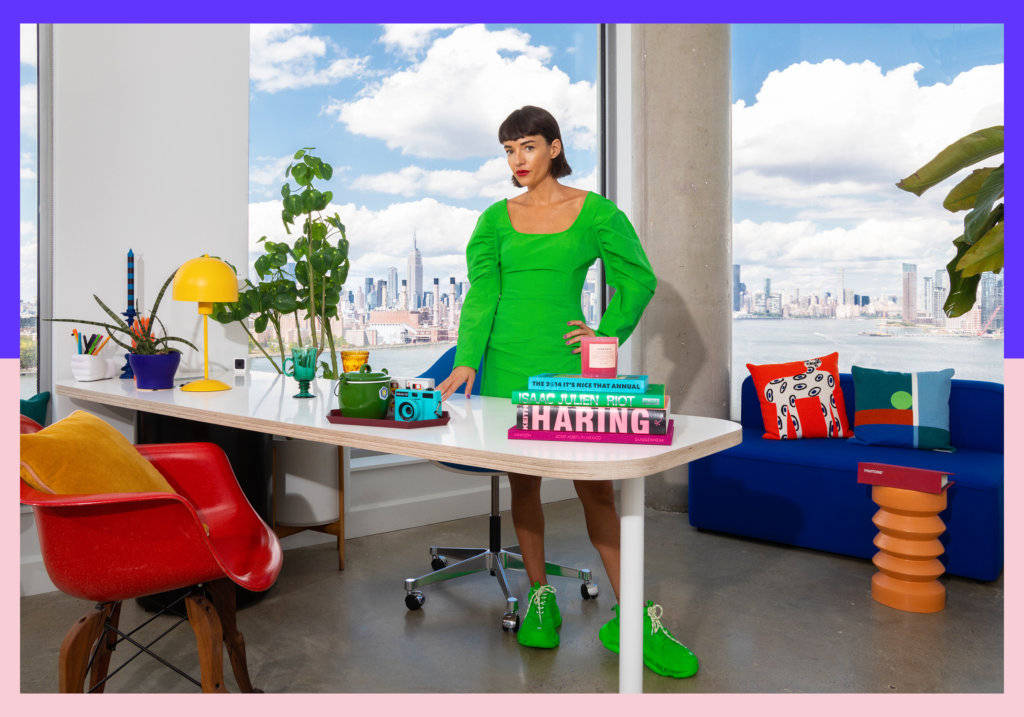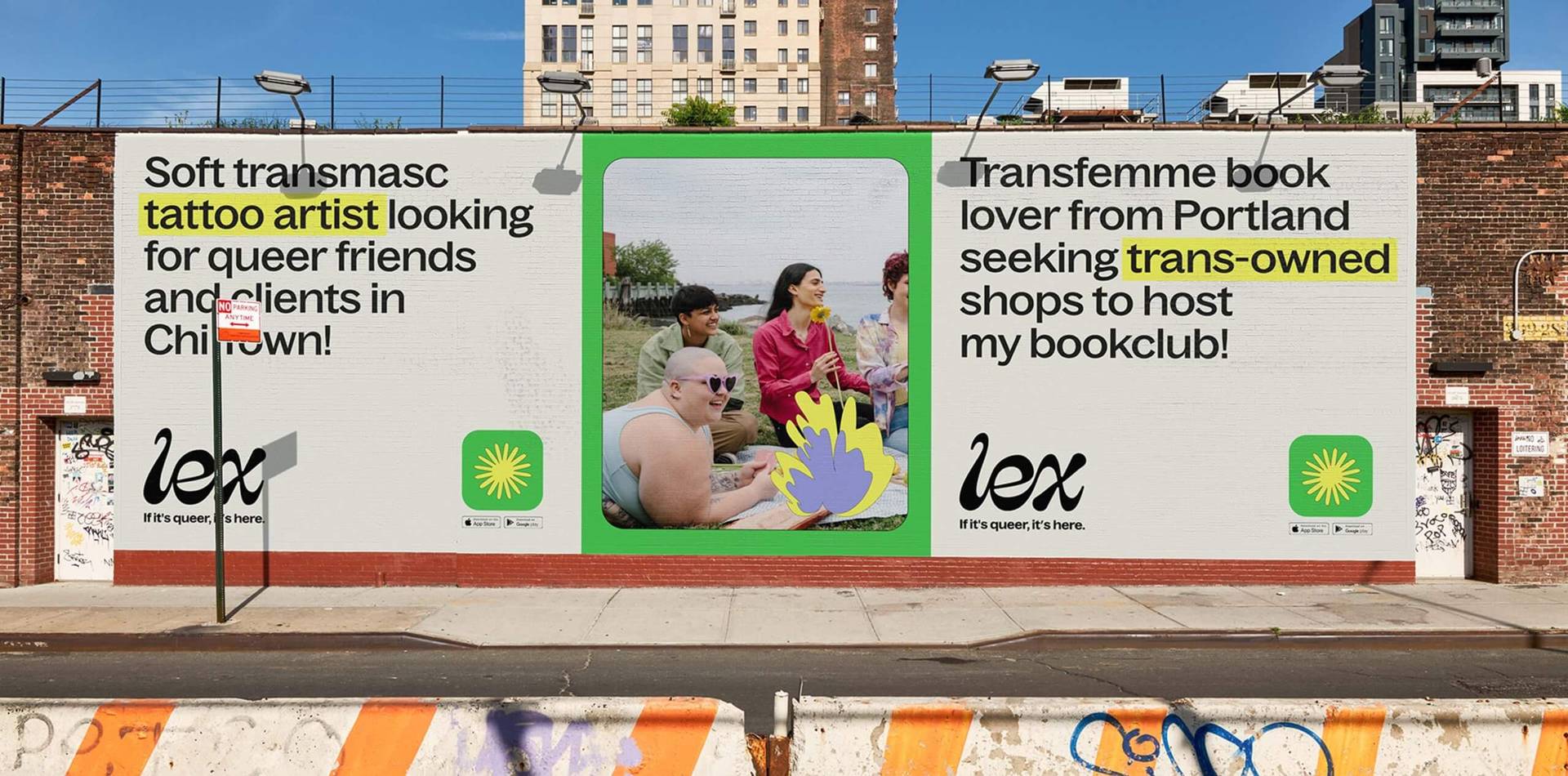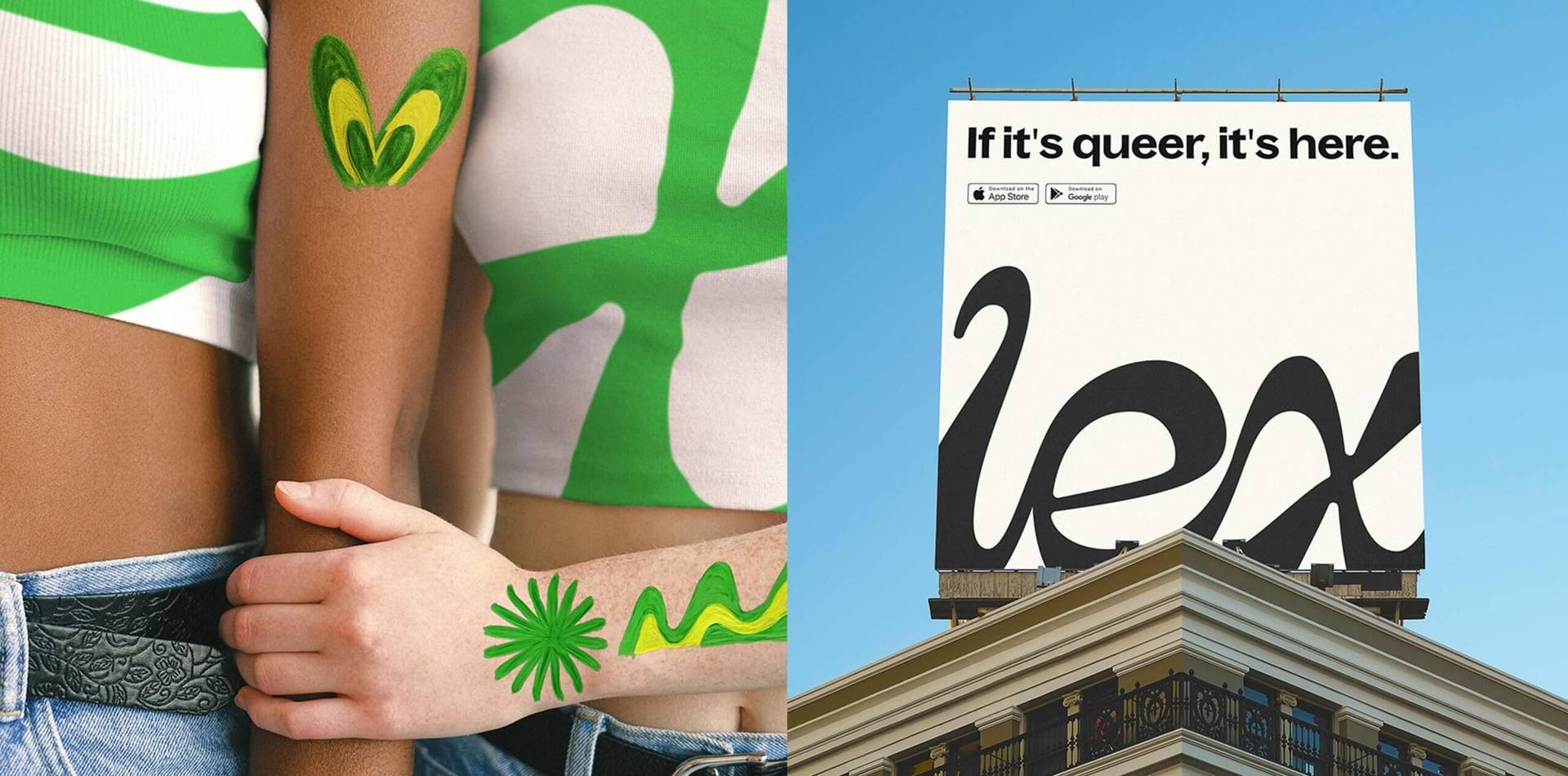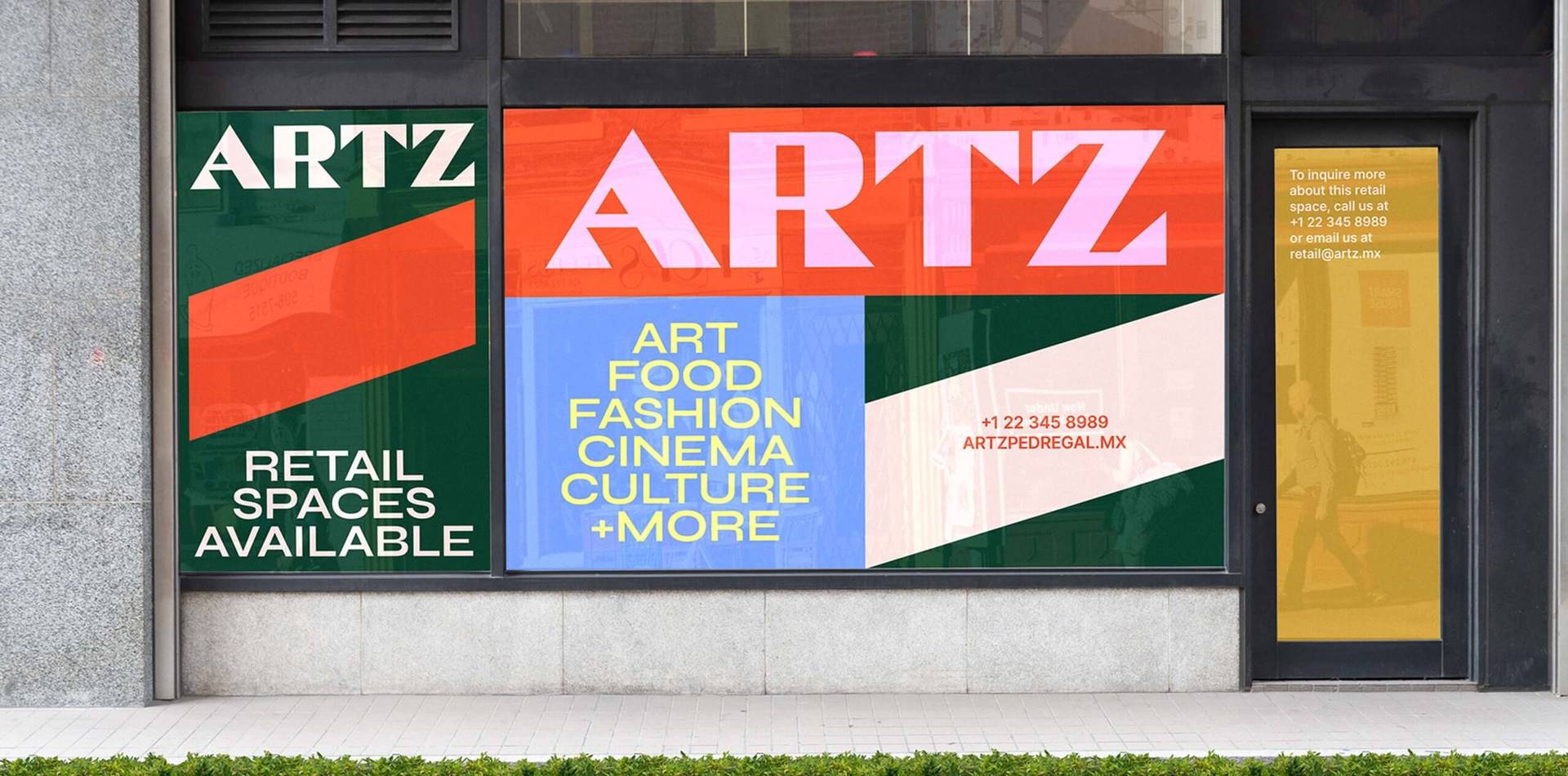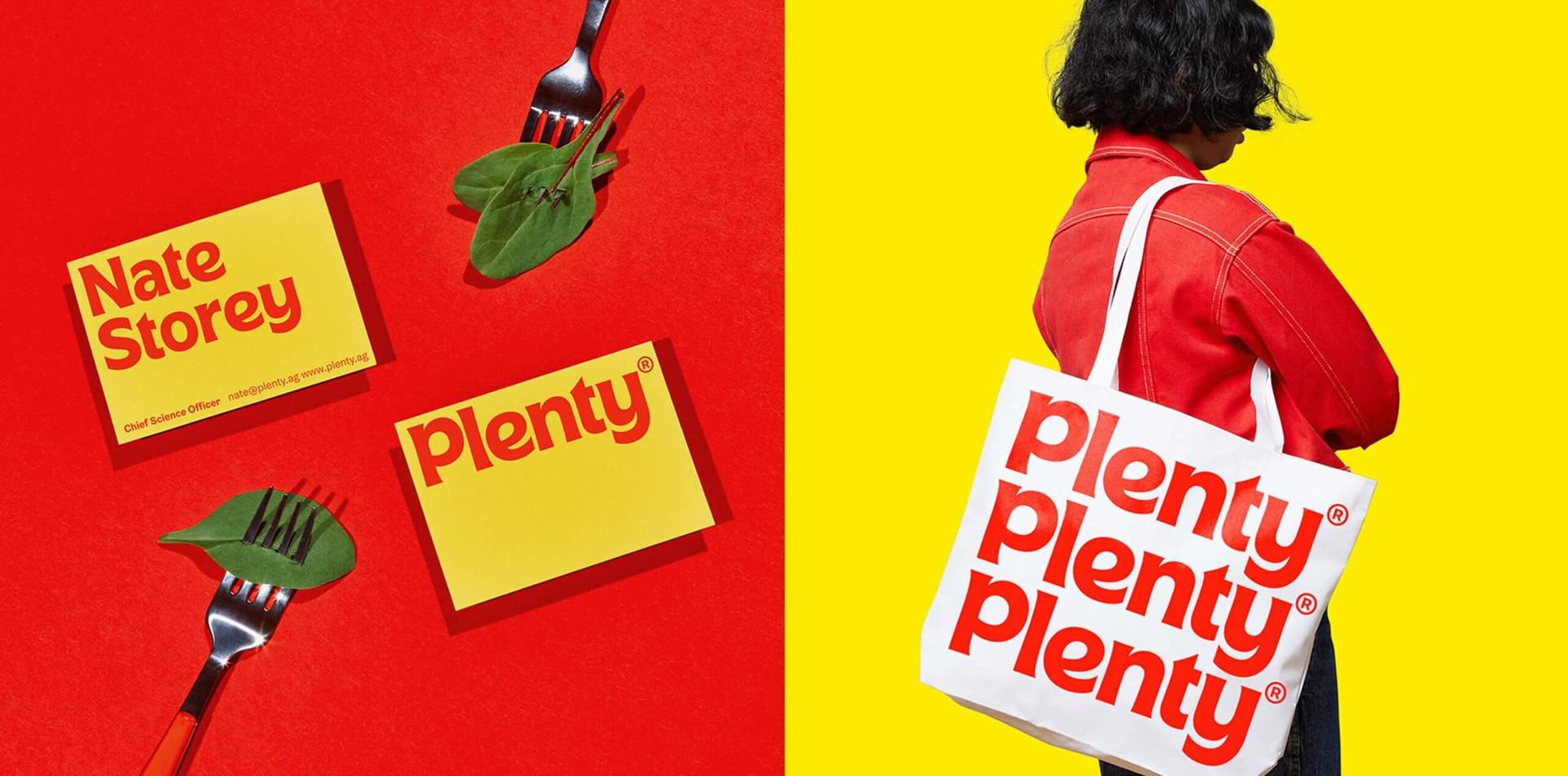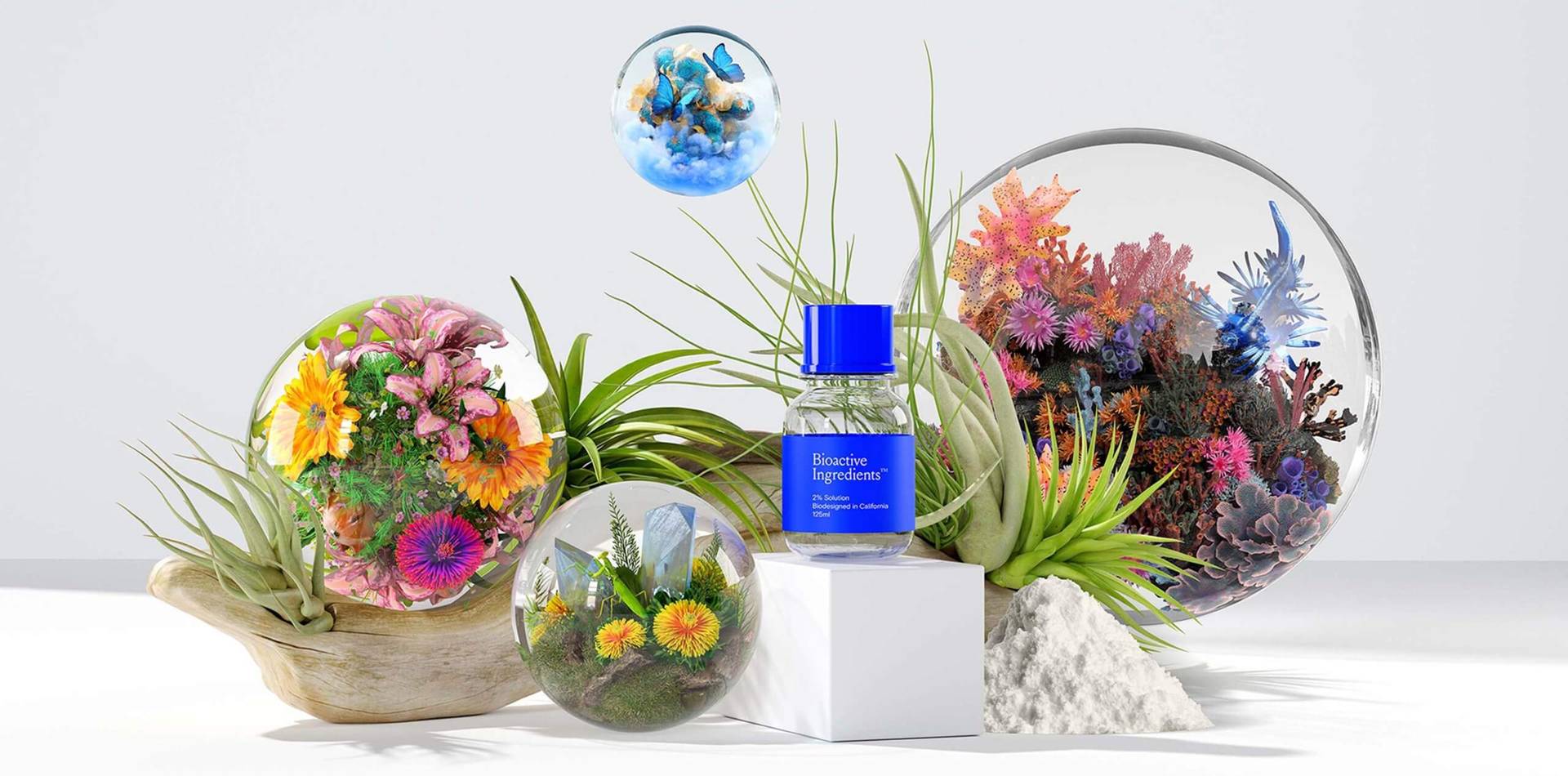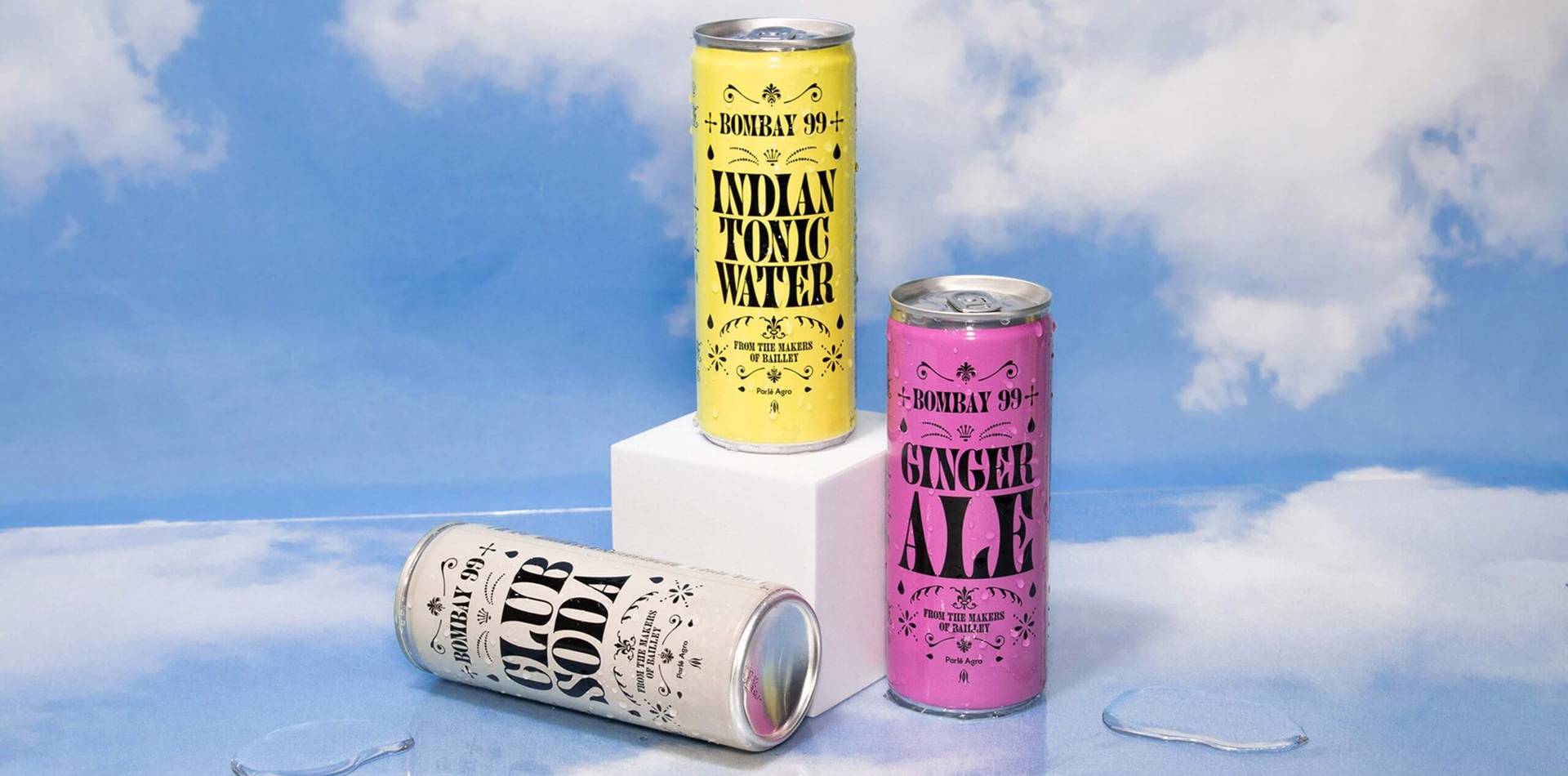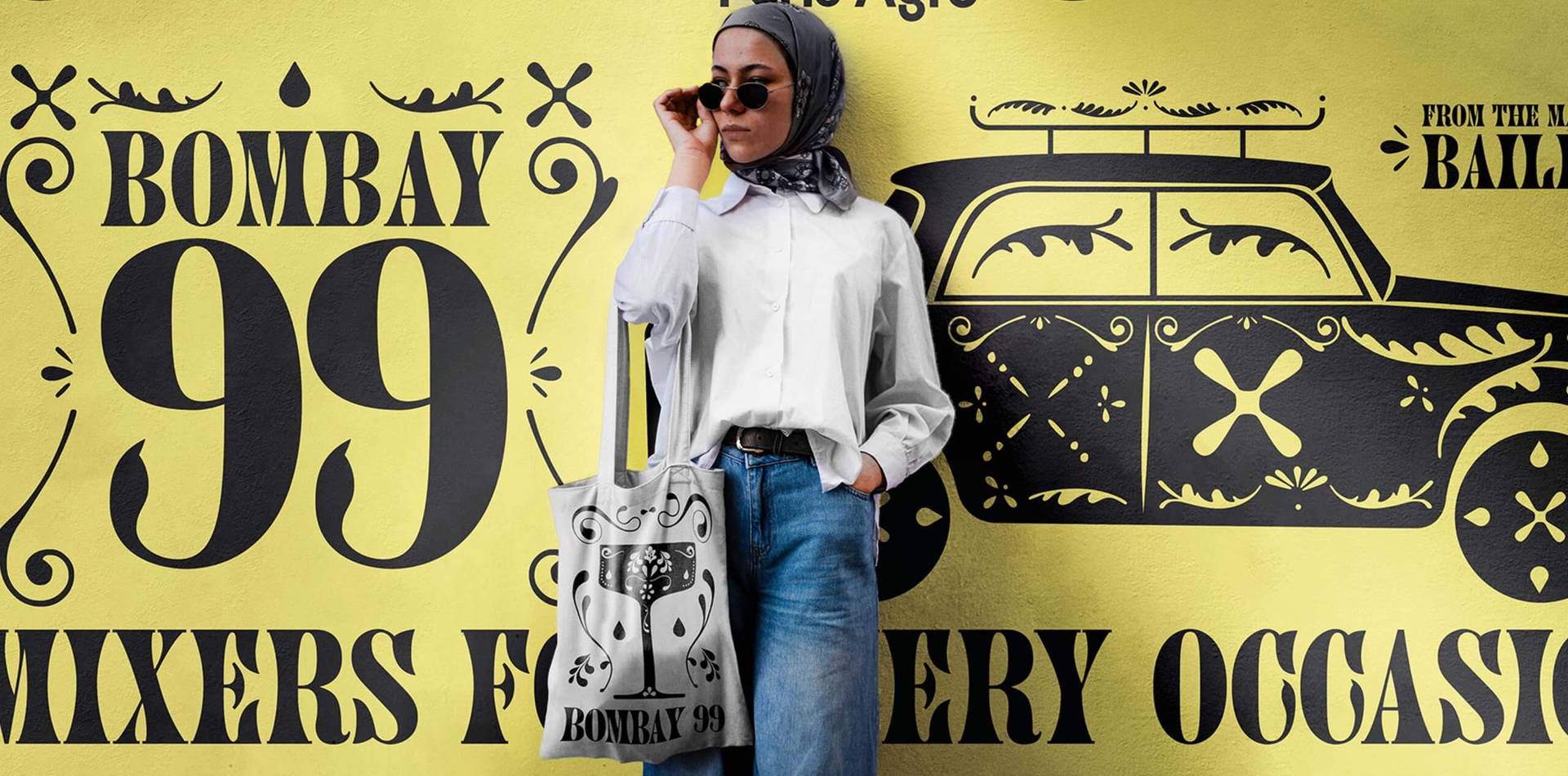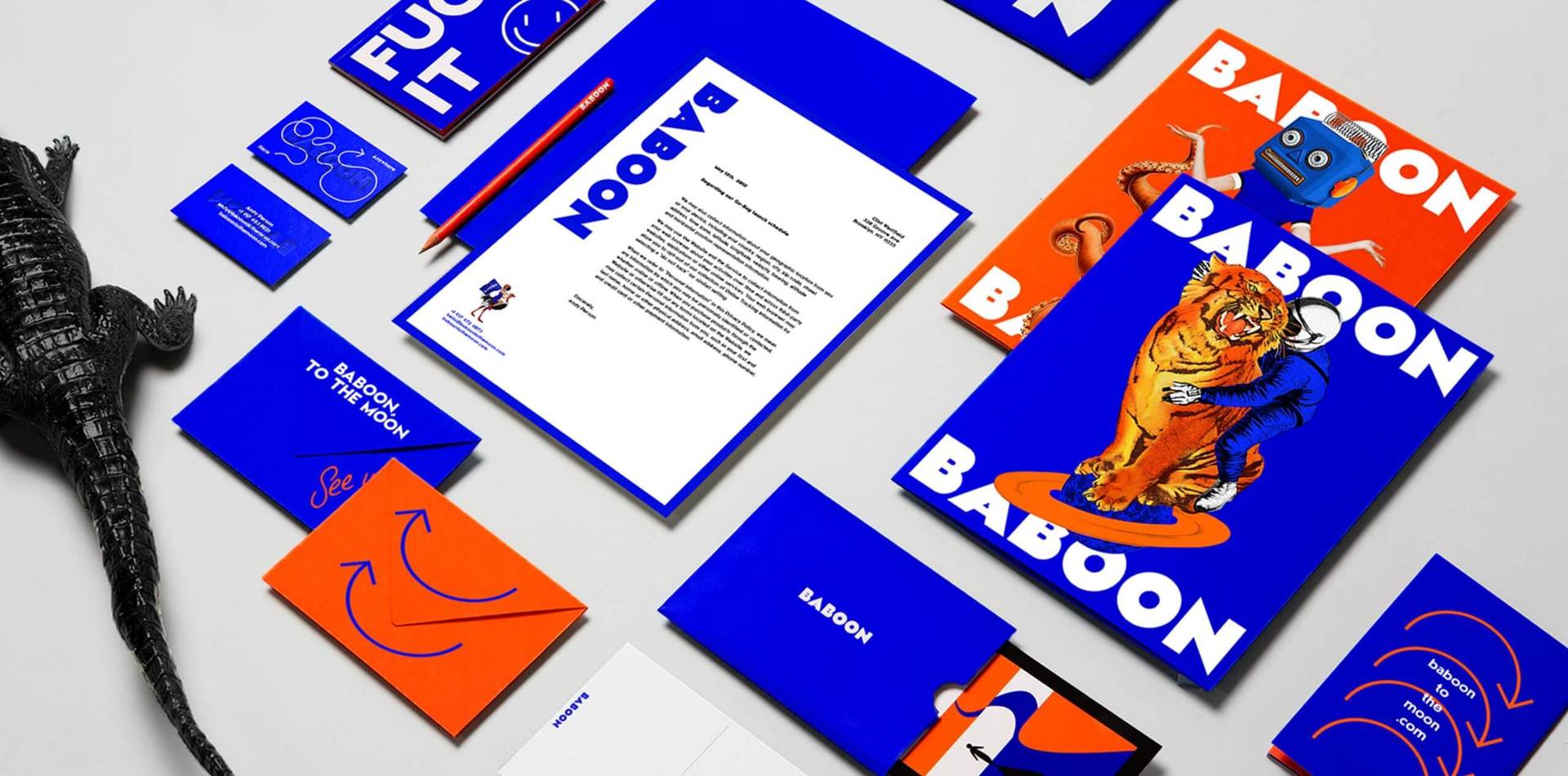Jessica Walsh is one of the most recognizable names in the design industry today. As the founder and creative director of the world-renowned &Walsh she runs one of the very few (0.1%*) creative agencies founded by a woman. Known for her concept-driven approach she has made a significant impact on the current landscape of design and visual communication.
Jessica founded &Walsh in 2019 with the aim of producing, “stellar creative and strategy work for top clients, and to leverage the studio’s resources for social impact initiatives that make a tangible difference in this industry.” Alongside her creative practice, one of the ways that she has always stood out is through her self-initiated, non-profit side projects, which include Ladies, Wine and Design and Let’s Talk About Mental Health both projects that are a result of her direct experience. As she tells DbyW, “In my personal work, I try to use design as a tool to elevate topics that are important to me, that starts dialogues, or gives back to the community in some way.”
After her early career success, Jessica sadly experienced a huge increase in hate mail and sexism from both men and women. As she tells us, “Still to this day, only 5-12% of creative directors or CEOs are women, depending on the country you live in. Once I started enjoying success in the design industry, I had many haters on social media. I began to notice that many of the haters were other women.” This led her to the idea for Ladies, Wine and Design, which is a global platform in over 250 cities worldwide, where women and non-binary creatives can share resources, celebrate and support each other.
Having her own creative agency was something that Jessica dreamed of from a young age. It allowed her to set &Walsh’s creative philosophy and purpose in line with her own principles and outlook. Founded on the idea that good branding “illuminates a brand’s true voice and personality,” Jessica tells us that, “creating work that functions for our clients’ goals and connects with their audiences is at the core of everything we do.” When approaching a new branding project &Walsh use an onboarding process of “brand therapy” where they help clients “Find their weird”. This allows the team at &Walsh to “help each brand discover what truly makes them unique, who they are at their core,” and facilitates creating, “ownable” and unique brands that reflect those traits.
For anyone thinking of founding their own creative agency Jessica’s key advice is to give “110% to everything you take on, and make sure your clients have a great experience working with you” as this is crucial to getting more work. “Designers have a tendency to think they’re right and the clients don’t get it; but really the clients are experts in what they do and it’s important to include them in the process in a meaningful way.” She believes that any start up creative business “should be something that you really believe in, something the world needs, or something that’s a differentiator in the marketplace.”
We talked with Jessica to find out more about her career so far, her advice for starting and running a successful creative agency, and her thoughts on counteracting the gender imbalance in the design industry.
*Source: The Drum
Can you tell us about your first steps into the design industry? What shaped and influenced you as a young designer?
I began my journey into creativity by teaching myself how to code and design websites at 11 years old. I created HTML help sites that taught other kids how to make their own sites and started making money off Google Ads. This early success gave me confidence to go to art school and dedicate my life to design. I attended RISD and in my foundation year took introductory courses in drawing, painting, ceramics, woodworking, and other unfamiliar art forms. In my second year, I declared design as my major and learned to combine my art and handmade elements with my digital skills. This all informed the multi-disciplinary design approach I have today.
After graduating from RISD, I turned down a full-time job at Apple to intern for Paula Scher. It was a big risk financially, but I knew being in NYC at a design studio would help with where I wanted to go long term. I worked there for many months before I landed a job as an art director at Print magazine. I started working there in 2008 when the economy crashed and the magazine’s budgets for illustration and photography were slashed. I’ve tried to approach constraints and hurdles as interesting obstacles. I taught myself photography and set design and started creating a lot of the cover and interior artwork for the magazine. This is where I developed my colorful handcraft set design style. I experimented and played with all kinds of techniques like body painting that I had not seen before in the design world. I quickly became recognized by magazines and awards for this colorful and surreal set design style and was hired by all kinds of clients to make this photo illustration work.
“I’ve tried to approach constraints and hurdles to be interesting obstacles. I taught myself photography and set design and started creating a lot of the cover and interior artwork for the magazine. This is where I developed my colorful handcraft set design style.”
After a few years of doing this, the colorful photo illustration style started to become more popular. I didn’t want to be pigeon-holed as doing this one kind of illustration style; it no longer felt as fresh and unique as when I started. It was at this point I decided that I wanted to start a design/branding studio so I would have varied clients and challenges. Fast forward to today and I am head of my own creative/design agency &Walsh.
Why did you found your own creative agency &Walsh in 2019? What were your initial experiences and why was it important to you to do this?
I launched &Walsh in 2019 with two goals in mind: to produce stellar creative and strategy work for top clients, and to leverage the studio’s resources for social impact initiatives that make a tangible difference in this industry.
Since I was young, it was always my dream to have a studio that was entirely my own. Being able to pass down my knowledge was something I always strived to do on a larger scale one day. As I got older, I realized there were other motives outside of passing down my knowledge and putting beautiful work into the world. I wanted to have control over my future regarding where I live, when I can have kids, and I how to run the business. This also gave me the opportunity to develop my own creative philosophy when it comes to client work, creating emotionally engaging, concept-driven work that is embodied in beautiful form. Creating work that functions for our clients’ goals and connects with their audiences is at the core of everything we do. In my personal work, I try to use design as a tool to elevate topics that are important to me, that starts dialogues, or gives back to the community in some way.
Aside from client work, I wanted &Walsh to be an agency that utilizes design and creativity for social impact. We invest in meaningful projects such as Ladies, Wine & Design and Let’s Talk About Mental Health. Ladies, Wine & Design is a global non-profit initiative that was born out of my personal experiences with sexism in our industry, not only from men but from other women. The community brings women in the creative field together with mentorship circles, creative reviews, and events. Let’s Talk About Mental Health was started to use design in a way that opens up conversation around issues that typically have a stigma attached to them. This type of work will be central to our agency and we have big plans to grow them.
How has &Walsh evolved to where you are now and have there been any pivotal projects or key moments?
Growing a successful studio has been a built over time. I never had any VC money or loans/investments from anyone, so growth had to happen organically as we brought in more money. There’s not one job or project I can point to that was pivotal. We’ve had a lot of great projects that’ve gotten great press each year. We never do any advertising. All work comes in organically, and almost entirely from past clients who loved our work and process and recommended us to friends or colleagues.
“The biggest advice I can give is to give 110% to everything you take on, and make sure your clients have a great experience working with you, as that’s how you get more work. Designers have a tendency to think they’re right and the clients don’t get it; but really the clients are experts in what they do and it’s important to include them in the process in a meaningful way.”
I also think you need to find your unique angle and what makes you different. &Walsh was founded upon the idea that great branding work illuminates a brand’s true voice and personality. Too often we see brands fall on identity trends that make them look like everyone else: whether that’s corporate Swiss modernism or more recently the “start-up brand” look and feel. My team aims to create timeless brands that stand out from the competition. To do this, when we on-board our clients we take them through a “brand therapy” phase to help them discover their brand’s personality and voice. These personality attributes should be honest to the brand, but they should also help them stand out from their competition. This “brand therapy” is done through a combination of an onboarding website, stakeholder interviews, and brand therapy workshops. The goal of these sessions is to help brands “find their weird.”
Too often brands are told to suppress idiosyncrasies or opinions out of fear of how consumers will respond. The problem is that when you try to please everyone and avoid anything that might offend someone, you wind up with a “vanilla” brand that says nothing. No one hates those brands, but no one truly loves them either. We’ve seen that the most successful brands stand for who they are unapologetically. A great brand is like a great person: true and honest about who they are, and unafraid to show their true colors.
“Finding your weird” does not mean all our brands turn out bizarre. Sure, we’ve created some brands with pooping rainbow unicorns, but that was for brands who wanted to appear irreverent. That tonality is not right for every brand.
“We help each brand discover what truly makes them unique, who they are at their core. From there, we can create ownable brands that reflect those traits.”
What are the biggest challenges you’ve faced as a woman during your career and how have you overcome them?
Earlier in my career when I started reaching a certain level of success and recognition in the design field, the amount of hate mail and outright sexism I experienced multiplied exponentially. What surprised me most about all of these remarks was that a large percentage of them came from women. This experience is part of what inspired me to start Ladies, Wine & Design (over 8 years ago now!), to focus on the idea of women supporting one another rather than tearing each other down.
Since founding LW&D, I’ve had the privilege of meeting so many amazing women in the creative field. I have formed new connections and have been so inspired by the diverse group of women and non-binary creatives part of our community. When we work with each other, rather than against each other, so much more can be accomplished. I feel very grateful for all the talented and supportive people I’ve met along the way.
Why did you decide to start the non-profit initiatives Ladies Wine Design and Let’s Talk About Mental Health and how do you balance running these alongside a busy creative agency?
Open a design history book and you’ll see that almost all the famous designers mentioned are white men. Still to this day, only 5-12% of creative directors or CEOs are women, depending on the country you live in. Once I started gaining success in the design industry, I had many haters on social media. I began to notice that many of the haters were other women. It made me realize that sometimes women can be unsupportive of other women, and I think that’s in part because our chance of reaching the top is so much slimmer than that of our male counterparts.
This realization inspired me to create Ladies, Wine & Design. I wanted to bring together women determined to help other women and create a platform where women could share resources and exchange ideas and inspiration. We hold free mentorship circles, creative meetups, salon nights, and conferences. The initiative grew organically, and we’re now in over 250 cities worldwide!
Women are fighting all around the world for rights and equality in different forms. For example, in the USA, we are fighting for the autonomy of our own bodies, pregnant folks/people are dying in hospitals due to arcane abortion laws made by old, cis, white men. In Iran, women are currently fighting for freedom and are being raped or executed for their attire or for expressing their opinions peacefully. These are just two examples of the systemic oppression women face and why I am a feminist. It’s even more important to be an intersectional feminist and include women of color, queer women, trans women, disabled women, and every woman in your feminism. As someone with a large audience and platform, I have a responsibility to use my voice to advocate for equality and diversity, and to uplift others. With that said, I’m not by any means an activist. I am a creative person that cares and tries but I’m also human with blind spots and privileges and I’m far from perfect. I’m not educated fully on every topic or issue, and this is not what I do day in and day out. So, I do not recommend thinking of me or following me for activism, instead follow amazing people and organizations such as Nicole Najafi, Tarana Burke, Middle East Matters, Marley Dias, Iranian Diaspora Collective, Olivia Julianna, Schuyler Bailar, for better reporting and activism on these topics.
What does your current workday look like – how much time is spent on the business side and how much on creative direction and managing your team?
I generally wake up at 6am and work until 6pm. Sometimes I work nights and weekends during busy periods, but I’ve tried to do that a lot less these past few years. Earlier in my career through launching &Walsh I worked absolutely non-stop. It can be tireless work to start and run a company. The breakdown of each day varies based on what’s going on, but I’d say my time overall is split between 50% creative direction, 10% production & client oversight, 30% “non-client” work like social media & social/non-profit causes, and 10% business. I used to spend a LOT more time on business and production, but I’ve made some strategic hires over the last years to alleviate some of the business/management tasks, so that so I could focus more on the creative.
What do you think are the most important skills and qualities for running a successful creative agency?
Running a creative agency is incredibly hard work and I’ve come up against my fair share of challenges. Below are some missteps and lessons that I have grown quite a lot from.
- Don’t grow too fast. A few years ago, we grew too fast. We had a lot of demand and took on too many designers at once without the right operational setup. Having the demand is great, but as you grow team dynamics and feelings of ownership change and you need to pay attention to this. We are now very strategic with the work we take on and do not let demand dictate our growth plan. We turn down most jobs that come our way.
- Don’t try to do it all. Over the years, I have learned that while I like to do it all, at a certain scale of our business, I can’t do it all. This was especially evident a few years ago. Our team grew very quickly, with the usual growing pains, and at the same time, I went through something terrible in my personal life. I was spread incredibly thin. As a result, I dedicated all my focus towards making a few new key hires and a new operations plan. Taking the weight of every detail of the business off my shoulders has made a big difference in our work and the office culture. It’s something I learned the hard way, but an incredible relief as we move forward as an agency.
- Hiring the right people is one of the most important skills you can have. Early on I always looked for the craziest creative talent that I could find when hiring. It was all about the portfolio, how strong someone was in terms of formal design skills or conceptual abilities. Along the way, I realized that while talent is important, it isn’t everything. When considering designers for promotions forward, especially for senior level positions, 50% is their work, & 50% is other criteria: (1) Do they fit our culture? Do they understand and champion our values and processes? (2) Are they easy to work with, are they collaborative and a team player? Too often designers get caught up in their own ego, and we need our senior talent to be easy to work with (3) Do they have an appetite to understand the strategy or business side of the work? Many designers can make beautiful work or great ideas, but do not seem to have a sense for when something is on-strategy or makes sense for a client’s goals or target audience. (4) What is their willingness to get involved in the small things that make our agency tick?
“Don’t try to do it all. Over the years, I have learned that while I like to do it all, at a certain scale of our business, I can’t do it all.”
Statistics show that only 0.1% of creative agencies are founded by women. As a successful creative director and agency owner, do you have any thoughts on how we can counteract this imbalance?
When I was in college, there were only a few women in the industry to look up to. It was a men’s club at the top. Now looking at my contemporaries, most of my favorite creatives are other women. There are numerous reasons the gender balance is becoming more equal, from women’s movements, increased awareness and intolerance of sexism, men splitting parenting duties, and generally more women idols and mentors; however, we continue to face incredible misogyny in the creative industry, and though I have a number of women to look to as leaders, there’s plenty more room for women and nonbinary folks at the top. It is not a solution to a patriarchal system, but one way to seek out change is by taking advantage of remote and digital opportunities for work. Social media, combined with cheaper tools allowing for a lower barrier to entry, and the flexibility to work from home, have all helped democratize who can become a designer or who can receive recognition and find success. It’s becoming less about who you are, where you’re from, and who you are connected with. Our agency has embraced remote working, and I have the privilege of working with an incredible international team in addition to our team based in NYC. Remote work does not change the fact that privilege still plays a part in the imbalance of women and nonbinary folks in leadership positions; but for folks looking to break through that barrier, I encourage you to take advantage of remote or digital opportunities to expand your network and find people internationally who will make space for you in the industry.
“Our agency has embraced remote working, and I have the privilege of working with an incredible international team in addition to our team based in NYC. Remote work does not change the fact that privilege still plays a part in the imbalance of women and nonbinary folks in leadership positions; but for folks looking to break through that barrier, I encourage you to take advantage of remote or digital opportunities to expand your network and find people internationally who will make space for you in the industry.”
What advice would you give to women and gender expansive creatives who aspire to found and run their own creative business?
I believe one of the most important things in business is to focus on the content or product. For building a brand, that means putting all your passion, love and energy into making a product, service or organization that is truly great and unique. It should be something that you really believe in, something the world needs, or something that’s a differentiator in the marketplace. If you’re a creator, focus on your passion and craft. What can you bring to the craft that’s uniquely your own? The most successful people I’ve known prioritize the content and the work that they’re creating before fame and money. The people I know who set out with the intention of only being rich and famous never went too far.
Second, while you have to work incredibly hard to get to leadership positions, don’t forget to enjoy the journey. So many of us get tied up in the end goal that we forget to take a step back and appreciate the process, our teams, and all the incredible people you meet along the way. I have been guilty of this in the past, and something I definitely want to focus on with this new chapter.
“The most successful people I’ve known prioritize the content and the work that they’re creating before fame and money. The people I know who set out with the intention of only being rich and famous never went too far.”
Visit:
Follow:
Article by Mary Hemingway
